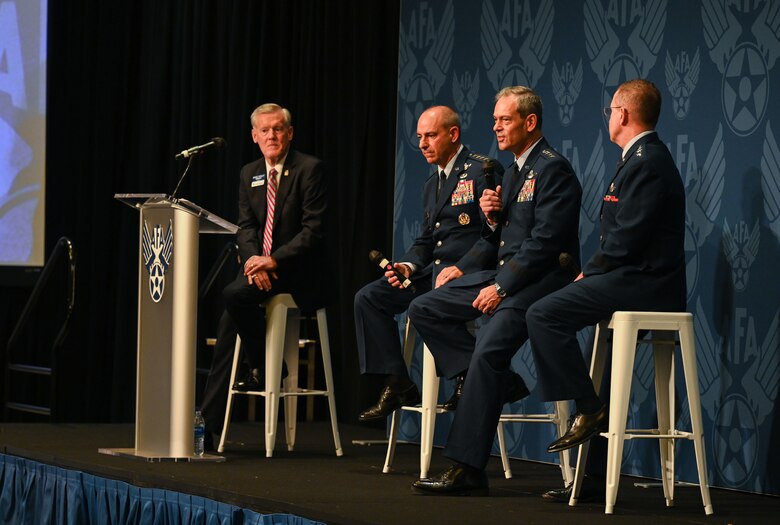Gen. Ken Wilsbach, Pacific Air Forces commander, shared his commander's perspective as a guest panelist for the Air Force Association's Agile Combat Employment panel during the AFA Air, Space and Cyber Conference, Sept. 20.
The panel consisted of Wilsbach, Gen. Jeffery Harrigian, U.S. Air Forces in Europe and Air Forces Africa commander, and Lt. Gen. James Slife, Air Force Special Operations Command commander.
"We can start with the basics of, 'What is ACE?'" Wilsbach said during his introduction. "It's the idea of dispersing your forces."
The National Defense Strategy places the Indo-Pacific as the priority theater. With an adversary like China, Air Force Chief of Staff Gen. CQ Brown, Jr., called upon the force to "rise to the challenges of today to prepare for tomorrow," by his 'Accelerate Change or Lose' motto, which is exactly what the ACE concept gets after.
"If you look at what China has been doing over the past several years, and the number of places they've been expanding and imposing Chinese will, they are doing so in a manner that is counter to the international rules-based order and a Free and Open Indo-Pacific," Wilsbach said. "We need to challenge China and Russia Every. Single. Day."
This is where ACE comes in. The dispersal of forces in a hub and spoke model allows the Air Force to be more resilient and to challenge China in a manner that's operationally unpredictable, but strategically predictable.
One critical piece that makes ACE work is multi-capable Airmen. These are Airmen that learn how to conduct operations outside of their normal Air Force specialty code so they can get the mission done with a smaller footprint out in the field.
"Our Airmen are really amazing at what they do," Wilsbach said. "I've seen them in action out in Palau and throughout the Indo-Pacific, and they embody what it means to be a multi-capable Airman. They get the mission done and they do it in a way that's really inspiring."
Another critical component of ACE is involving allies and partners.
"Look at who is on China's team, it's a pretty small list," Wilsbach said. "Now look at who is on our list, it's a very long list of countries that want to be on our team, who support a Free and Open Indo-Pacific. Some countries have gladly allowed us to come in to do ACE operations, others we still have to talk with them about it, and then there are some countries that want to do ACE with us - that interoperability is appreciated."
By continuing to exercise the ACE concept, Wilsbach said that what started out as a PowerPoint presentation five years ago has grown into the Air Force conducting ACE operations all over the globe.
"If we do not challenge the status quo, we will not be able to provide airpower anytime, anywhere," Brown said. "We must accelerate change so that the only thing that's impossible is to lose."

Gen. Ken Wilsbach, Pacific Air Forces commander, shares his commander's perspective as a guest panelist for the Air Force Association's Agile Combat Employment panel during the Air Force Association Air, Space and Cyber Conference in National Harbor, Md., Sept. 20, 2021. The panel consisted of Wilsbach, Gen. Jeffery Harrigian, U.S. Air Forces in Europe and Air Forces Africa commander, and Lt. Gen. James Slife, Air Force Special Operations Command commander. (U.S. Air Force photo by Tech. Sgt. Jimmie D. Pike)

Retired Lt. Gen. Bruce "Orville" Wright, Air Force Association president, Gen. Jeffery Harrigian, U.S. Air Forces in Europe and Air Forces Africa commander, Gen. Ken Wilsbach, Pacific Air Forces commander and Lt. Gen. James Slife, Air Force Special Operations Command commander, discuss Agile Combat Employment during the Air Force Association Air, Space and Cyber Conference, National Harbor., Sept. 20, 2021. (U.S. Air Force photo by Tech. Sgt. Jimmie D. Pike)






